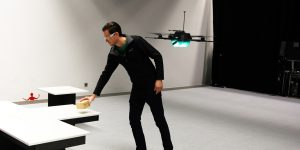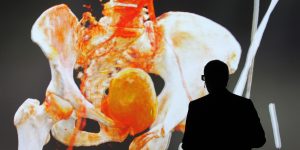
Projects
2014
-

Connecting Cities
A European Network of Media Façades
Connecting Cities is a EU-funded culture project aiming at building a worldwide expanding network of media facades, urban screens and other digital projection sites. In contrast to their typically commercial usage, Connecting Cities supports the exchange of artistic or socially relevant contents.
-

CADET
Between 2010 and 2014, the FFG-funded Center for Advances in Digital Entertainment Technologies — in short CADET — has dealt with the research, advancement and usability of immersive technologies taken from the gaming and digital-entertainment industries.
-

pharus
The pharus tracking system was developed at the Ars Electronica Futurelab by researcher and artist Otto Naderer to provide interaction opportunities for any size group of people in virtually any environment.
-

Future Innovators Summit
The Future Innovators Summit (FIS) is an intercultural workshop format which was initiated in 2014 and has developed until 2019 into the key think-tank program during the Ars Electronica Festival. At this summit, experienced professionals as well as young entrepreneurs and social activists, technicians and scientists, and of course artists and designers, met at the…
-

Shared Space Spaxels
Since 2013, the Ars Electronica Futurelab and Mercedes-Benz have been facing one of the most challenging issues raised by autonomous mobility: How can we humans communicate with self-driving cars in ways that make us feel comfortable and safe?
-

Future Catalysts
In 2014, Ars Electronica launched the collaborative project Future Catalysts together with Japan’s premier advertising agency Hakuhodo. The project views artists and people with artistic perspectives as “catalysts for the future”.
-

Virtual Anatomy & Pathology at Deep Space
A look back at the history of medicine quickly reveals that the graphic depiction of the human body and its internal organs has a very long tradition. Beginning with sketches rendered by hand all the way to x-ray techniques and modern digital methods like computer tomography (CT) and magnetic resonance imaging (MRI), the representation of…
-

Spaxels
Drone shows and swarm art performances
In September 2012, a new medium for physical-visual expression was born along the banks of the river Danube in Linz: The world’s first large-scale outdoor formation drone flight illuminated the night sky as part and centerpiece of the open-air music festival Klangwolke.
